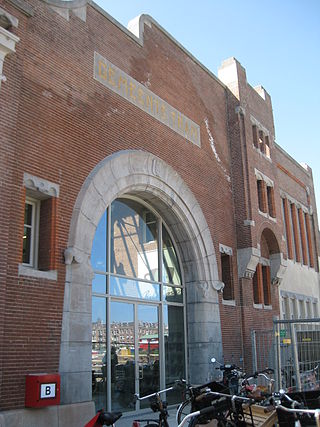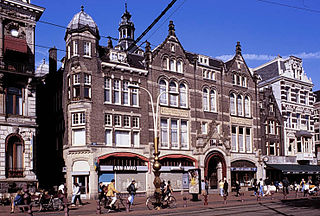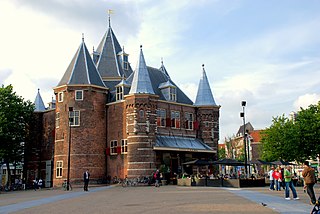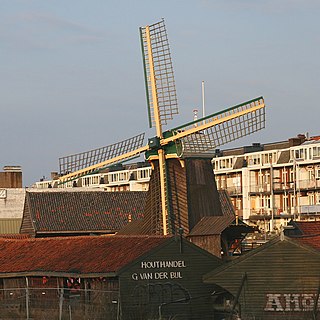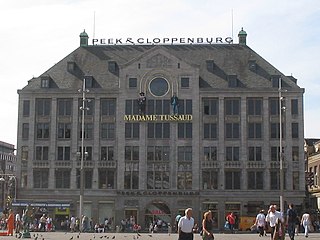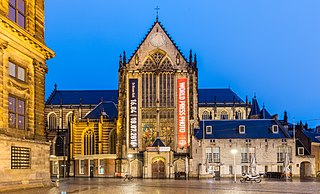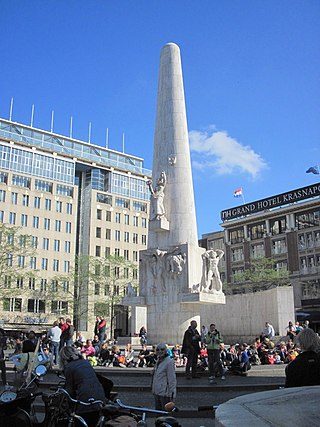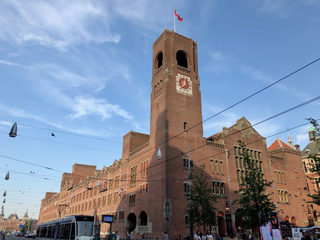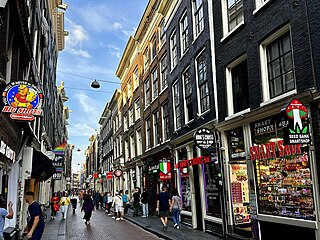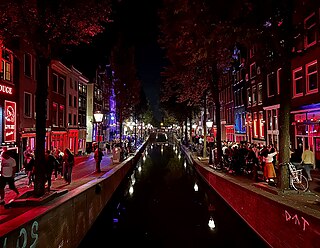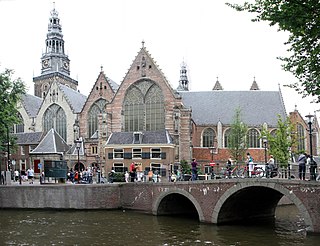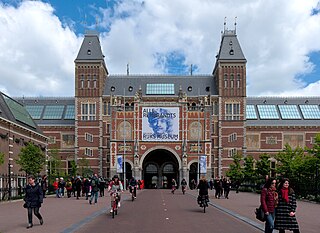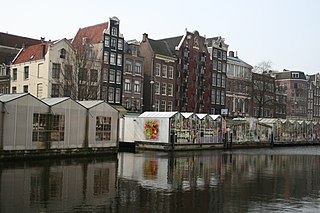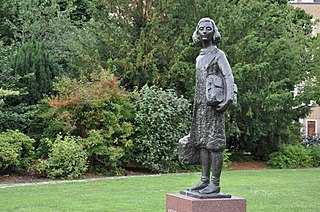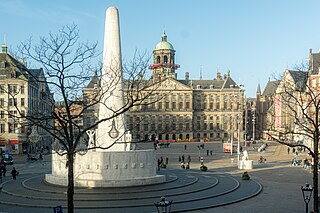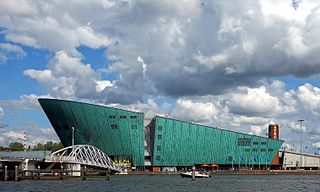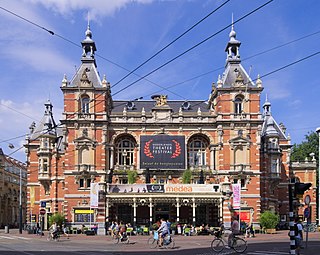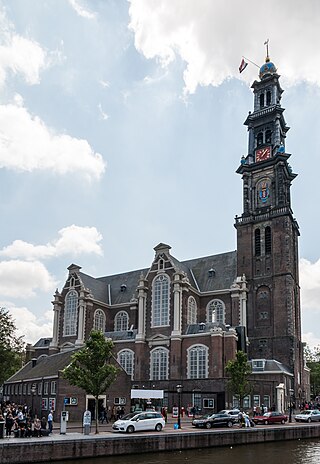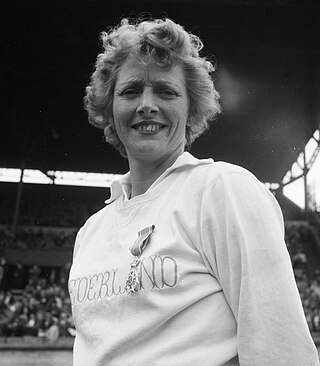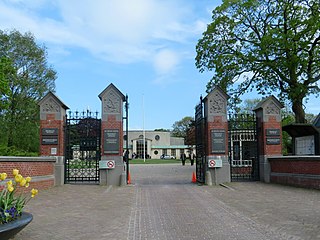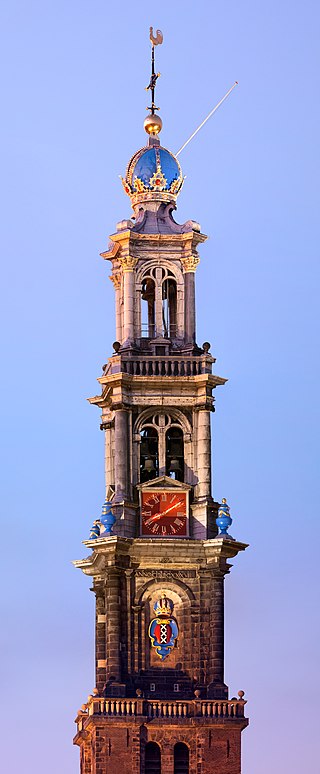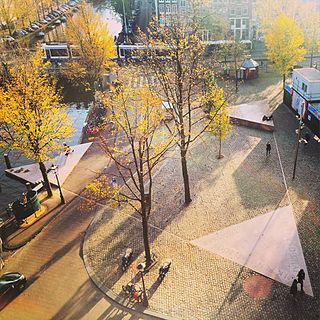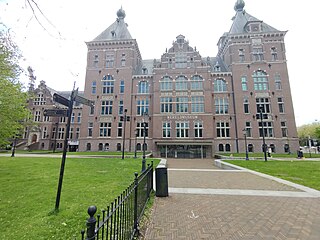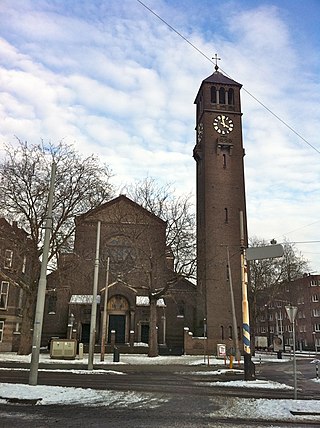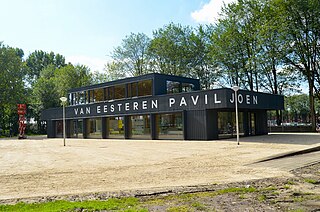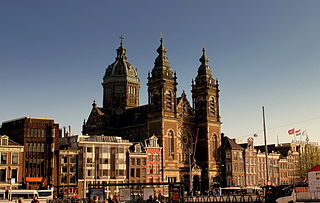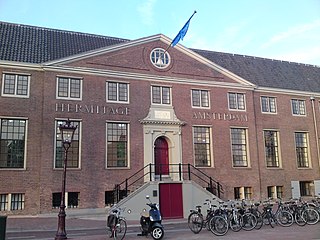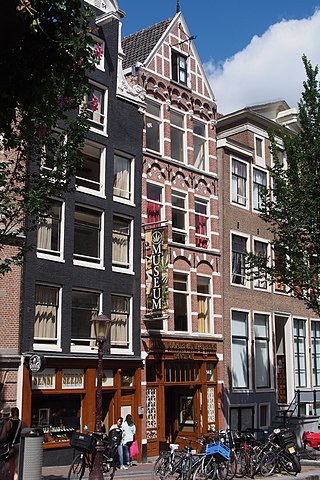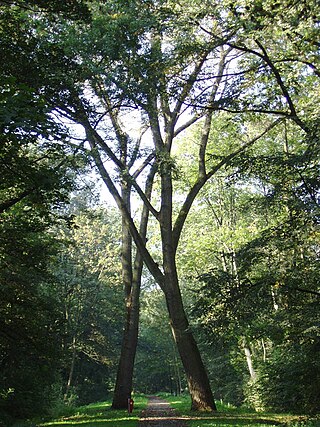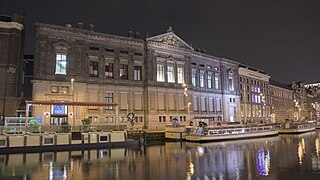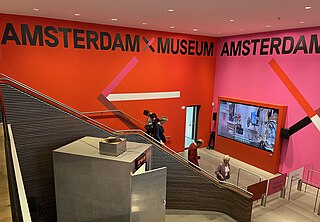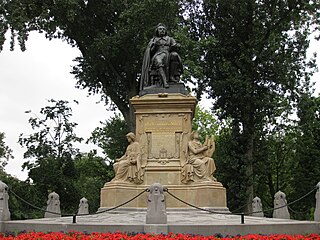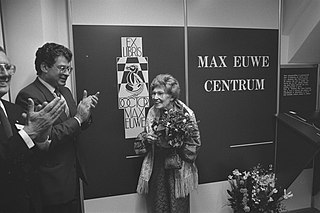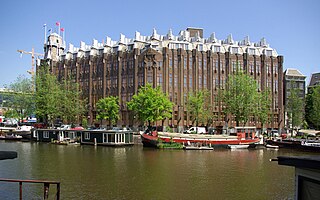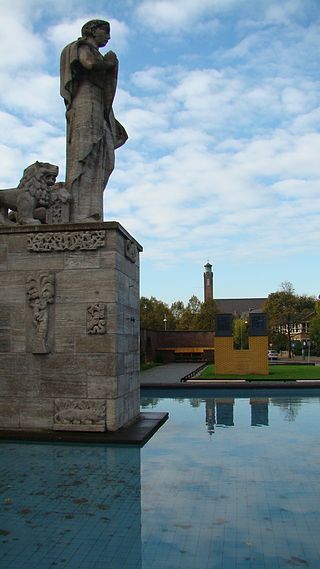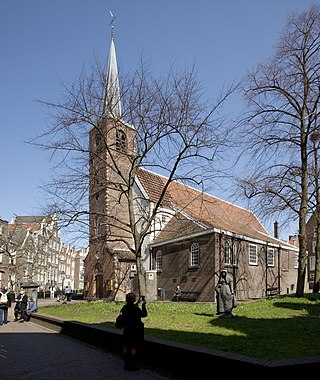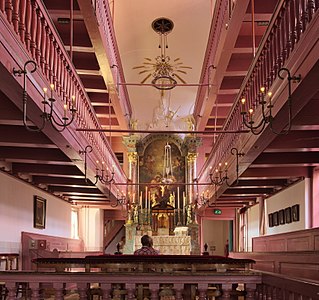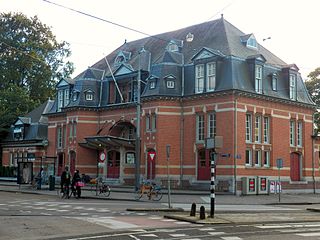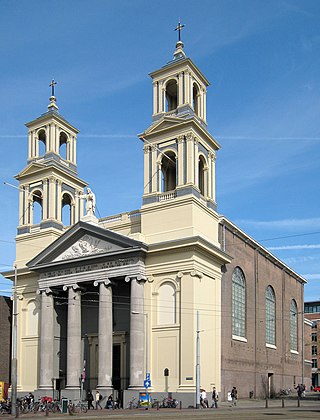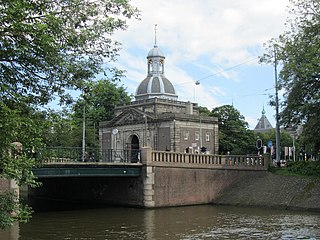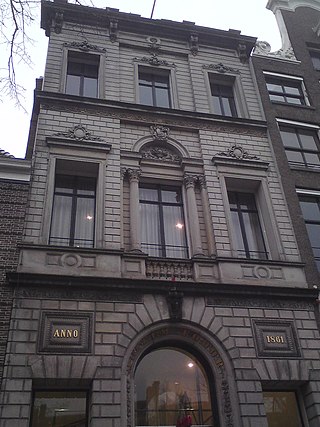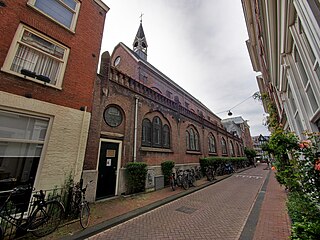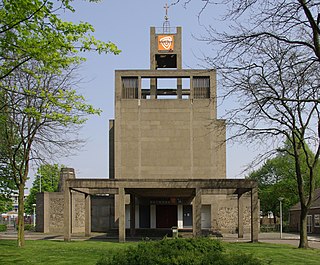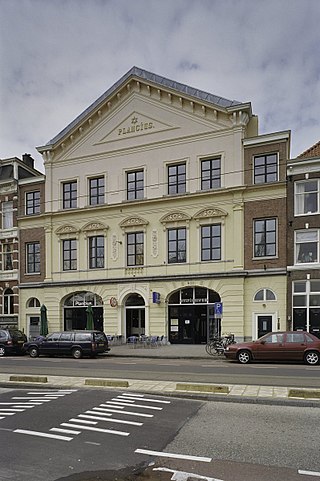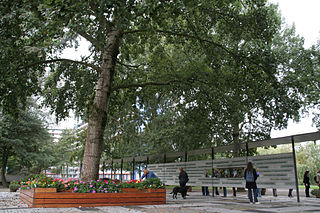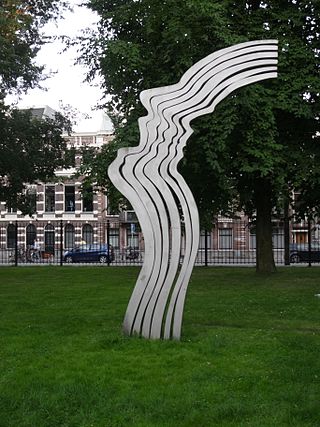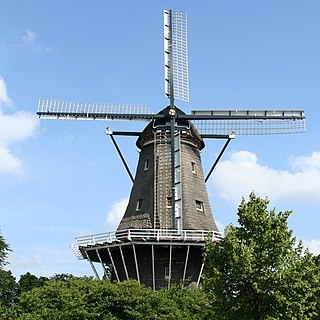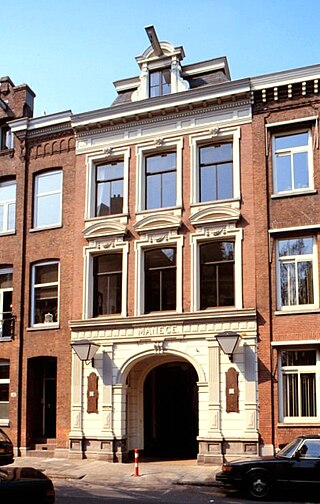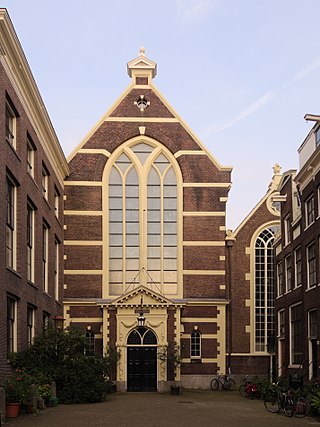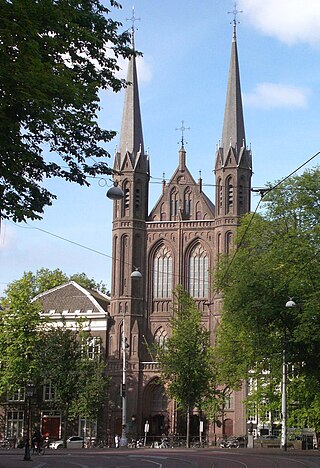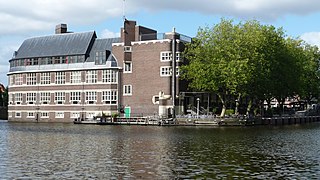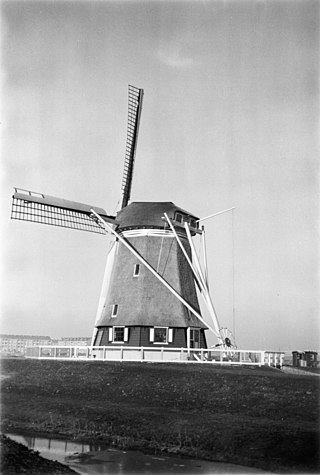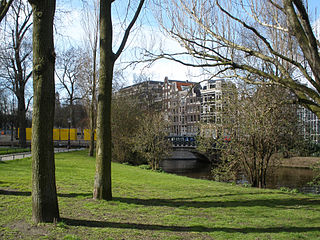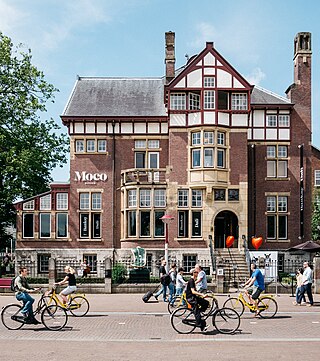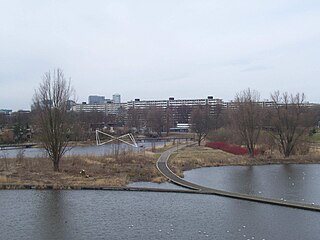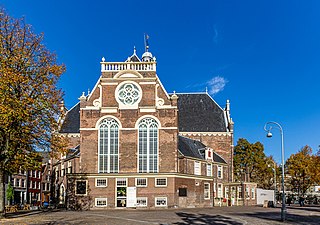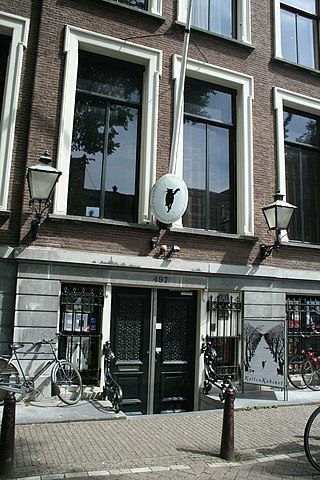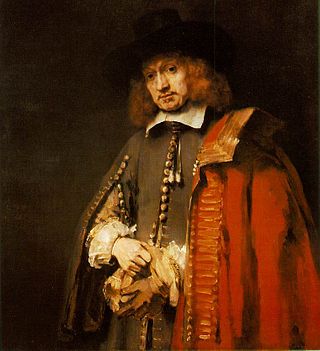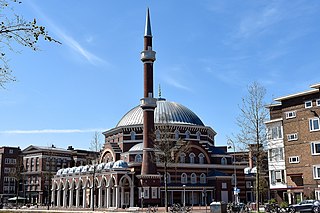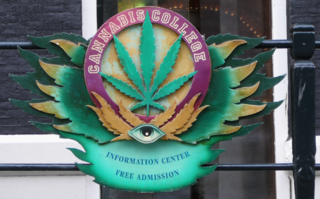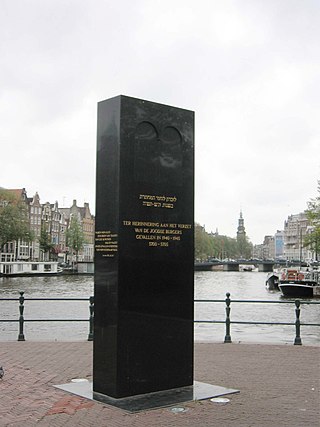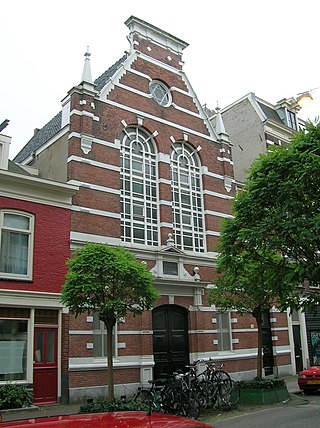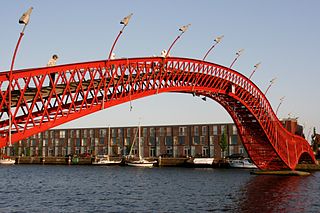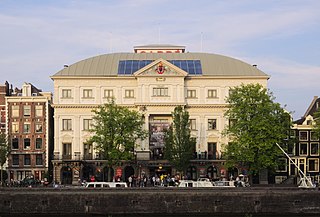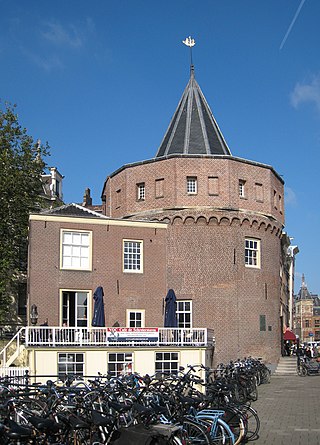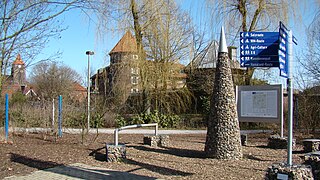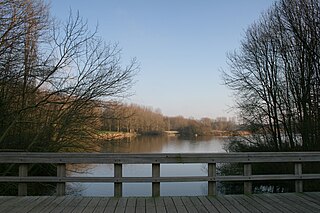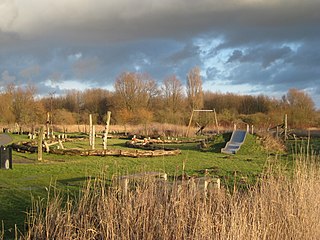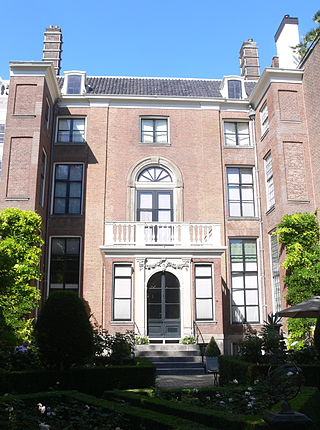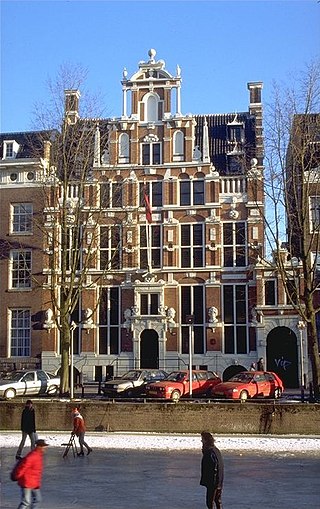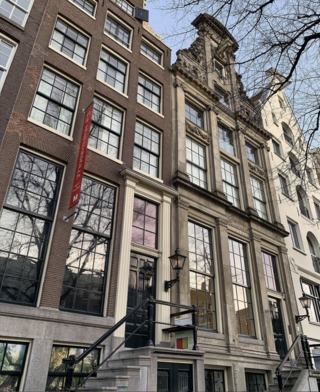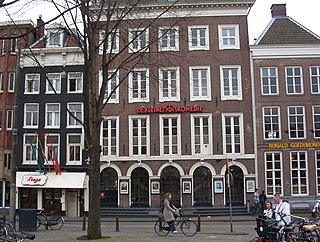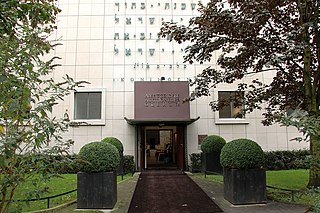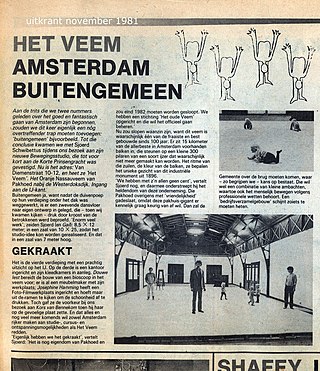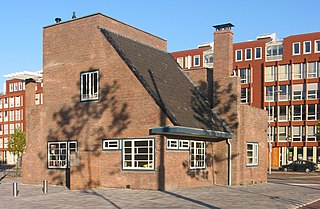100 Sights in Amsterdam, Netherlands (with Map and Images)
Legend
Premium Sights
Book tickets, guided tours and activities in Amsterdam.
Guided Free Walking Tours
Book free guided walking tours in Amsterdam.
Welcome to your journey through the most beautiful sights in Amsterdam, Netherlands! Whether you want to discover the city's historical treasures or experience its modern highlights, you'll find everything your heart desires here. Be inspired by our selection and plan your unforgettable adventure in Amsterdam. Dive into the diversity of this fascinating city and discover everything it has to offer.
Sightseeing Tours in AmsterdamActivities in AmsterdamDe Hallen is a cultural center in the Kinkerbuurt in Amsterdam-West, with more than two million visitors a year. This former tram depot in the heart of Amsterdam-West houses a diversity of creative companies and talents, such as the FilmHallen, FoodHallen, De Hallen Studios, various shops with products from local makers such as The Maker Store and NOWA & Nature Bar, a hotel, a childcare centre, bicycle shop Recycle, gallery Beeldend Gesproken and one of the most busy branches of the Amsterdam Public Library with reading café Belcampo,
The Amsterdam Dungeon, in the city of Amsterdam, Netherlands, follows a similar format to the London Dungeon, York Dungeon, Berlin Dungeon and Hamburg Dungeon which are owned and operated by UK-based Merlin Entertainments and attempts to show history through an interactive adventure. Live actors, a ride, shows and special effects simulate historical dark and bleak times, it was first opened in September 2005.
The Waag is a 15th-century building on Nieuwmarkt square in Amsterdam. It was originally a city gate and part of the walls of Amsterdam. Later it served as a guildhall, museum, fire station and anatomical theatre, among other things.
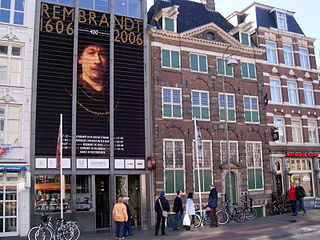
The Rembrandt House Museum is a museum located in a former house in the Jodenbreestraat, in the center of Amsterdam. Between 1639 and 1658, the house was occupied by the Dutch painter Rembrandt van Rijn, who also had his studio and art dealership there.
De Otter is a paltrok mill in Amsterdam, Netherlands which has been restored to working order. As all Dutch paltrok mills it is a windpowered sawmill. The mill is listed as a Rijksmonument, number 1198.
6. Madame Tussauds Amsterdam
Madame Tussauds Amsterdam is a wax museum situated in Amsterdam, the capital city of the Netherlands. It is located in the centre of the city on Dam Square, near the Royal Palace of Amsterdam. Founded in 1970, it was the first Madame Tussauds that was opened in mainland Europe as well as being the first foreign branch of the British institution. The collection of Madame Tussauds Amsterdam consists of a collection of wax figures of famous celebrities in different categories such as the Golden Age of Dutch history, music, sport and film.
The Nieuwe Kerk is a 15th-century church in Amsterdam located on Dam Square, next to the Royal Palace. Formerly a Dutch Reformed Church parish, it now belongs to the Protestant Church in the Netherlands.
The National Monument on Dam Square is a 1956 cenotaph in Amsterdam, Netherlands. A national Remembrance of the Dead ceremony is held at the monument every year on 4 May to commemorate the casualties of World War II and subsequent armed conflicts.
The Anne Frank House is a writer's house and biographical museum dedicated to Jewish wartime diarist Anne Frank. The building is located on a canal called the Prinsengracht, close to the Westerkerk, in central Amsterdam in the Netherlands.
10. Concertgebouw
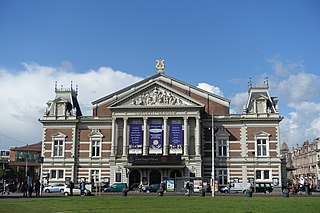
The Royal Concertgebouw is a concert hall in Amsterdam, Netherlands. The Dutch term "concertgebouw" translates into English as "concert building". Its superb acoustics place it among the finest concert halls in the world, along with Boston's Symphony Hall and the Musikverein in Vienna.
11. Begijnhof
The Begijnhof is one of the oldest hofjes in Amsterdam, Netherlands. A group of historic buildings, mostly private dwellings, centre on it. As the name suggests, it was originally a béguinage. Today it is also the site of two churches, the Catholic Houten Huys and the English Reformed Church.
12. Beurs van Berlage
The Beurs van Berlage is a building on the Damrak, in the centre of Amsterdam. It was designed as a commodity exchange by architect Hendrik Petrus Berlage and constructed between 1896 and 1903. It influenced many modernist architects, in particular functionalists and the Amsterdam School. It is now used as a venue for concerts, exhibitions and conferences.
13. Warmoesstraat
Warmoesstraat is one of the oldest streets in Amsterdam, running parallel to Damrak from Nieuwebrugsteeg to Dam Square. Its origins are in the 13th century. In the 16th and 17th century it was the shopping street. During the Dutch Golden Age, the father of legendary poet and playwright Joost van den Vondel ran a business as a silk merchant there.
14. Red Light District
De Wallen is the largest and best known red-light district in Amsterdam. It consists of a network of alleys containing approximately 300 one-room cabins rented by prostitutes who offer their sexual services from behind a window or glass door, typically illuminated with red lights and blacklight. Window prostitution is the most visible and typical kind of red-light district sex work in Amsterdam.
15. Amsterdam
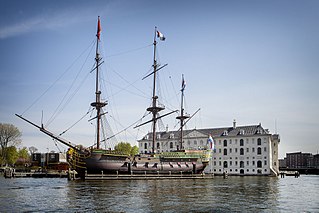
The Amsterdam from 1990 is a replica of the mirror return ship of the same name of the Dutch East India Company (VOC). When interest in the history of the VOC and its role in the history of the Netherlands increased at the end of the 20th century, plans arose to recreate VOC ships. One of those ships is the Amsterdam. Between 1982 and 1990, a replica of this was built from iroko wood by 400 volunteers of the Stichting Amsterdam Bouwen Oostindiëvaarder (SABO). This replica has been moored since 1990 at the jetty of the National Maritime Museum in Amsterdam, the former 's Lands Zeemagazijn.
16. Old Church
The Oude Kerk is Amsterdam's oldest building and newest art institute. The building was founded about 1213 and consecrated in 1306 by the bishop of Utrecht with Saint Nicolas as its patron saint. After the Reformation in 1578, it became a Calvinist church, which it remains today. It stands in De Wallen, now Amsterdam's main red-light district. The square surrounding the church is the Oudekerksplein.
17. Rijksmuseum
The Rijksmuseum is the national museum of the Netherlands dedicated to Dutch arts and history and is located in Amsterdam. The museum is located at the Museum Square in the borough of Amsterdam South, close to the Van Gogh Museum, the Stedelijk Museum Amsterdam, and the Concertgebouw.
18. Flower Market
The Bloemenmarkt is the world's only floating flower market. Founded in 1862, it is sited in Amsterdam, Netherlands, on the Singel canal between Muntplein and Koningsplein in the city's southern canal belt. It has 15 souvenir and gift shops, with only a few still selling fresh flowers. Today, the market is one of the main suppliers of flower bulbs and tulip paraphernalia to tourists visiting Amsterdam. The quality of the flower bulbs sold is questionable at best. A 2019 survey found bulbs bought at the Bloemenmarkt rarely to never flower.
19. Anne Frank
The statue of Anne Frank on the Westermarkt in Amsterdam is a statue of the German-Jewish girl Anne Frank who died during the Holocaust at the age of fifteen. Through her diary, Anne Frank has become the symbol of the victims of the Holocaust worldwide.
20. Anne Frank
The statue of Anne Frank on the Merwedeplein in Amsterdam is a statue of the German-Jewish girl Anne Frank who died at the age of fifteen during the Holocaust. Through her diary, Anne Frank has become the symbol of the victims of the Holocaust worldwide.
21. Dam Square
Dam Square or the Dam is a town square in Amsterdam, the capital and most populated city of the Netherlands. Its notable buildings and frequent events make it one of the best-known and most important locations in the city and the country.
22. Nemo
NEMO Science Museum is a science centre in Amsterdam, Netherlands. It is located in the Oosterdokseiland neighbourhood in the Amsterdam-Centrum borough, situated between the Oosterdokseiland and the Kattenburg. The museum has its origins in 1923, and is housed in a building designed by Renzo Piano since 1997. It contains five floors of hands-on science exhibitions and is the largest science center in the Netherlands. It attracts around 728,000 visitors annually, which makes it the seventh most visited museum in the Netherlands.
23. Leidseplein
Leidseplein is a square in central Amsterdam, Netherlands. It lies in the Weteringschans neighborhood, immediately northeast of the Singelgracht. It is located on the crossroads of the Weteringschans, Marnixstraat and Leidsestraat.
24. Jewish Museum
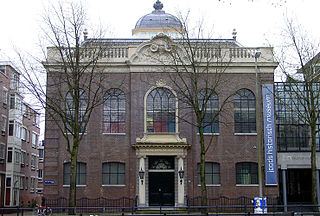
The Jewish Museum in Amsterdam is a museum that highlights Jewish culture, religion, and history. Since 1987, the museum has been located on the Jonas Daniël Meijerplein in the heart of the old Jewish Quarter. The covered space between four synagogues that have been restored to an 18th-century state forms the entrance at Nieuwe Amstelstraat 1. The museum is part of the Jewish Cultural Quarter.
25. Westerkerk
The Westerkerk is a Reformed church within Dutch Protestant Calvinism in central Amsterdam, Netherlands. It lies in the most western part of the Grachtengordel neighborhood, next to the Jordaan, between the Prinsengracht and Keizersgracht.
26. Fanny Blankers-Koen
Francina Elsje "Fanny" Blankers-Koen was a Dutch track and field athlete, best known for winning four gold medals at the 1948 Summer Olympics in London. She competed there as a 30-year-old mother of two, earning her the nickname "the Flying Housewife", and was the most successful athlete at the event.
27. De Nieuwe Ooster
The Nieuwe Oosterbegraafplaats is a cemetery in Amsterdam. This is located on the Kruislaan in the Watergraafsmeer in Amsterdam-Oost and has an area of 33 hectares. The cemetery opened on 1 May 1894. It is now called De Nieuwe Ooster, because of the construction of a crematorium in 1994, after a design by R. van Liesveld.
28. Westertoren
The Westertoren in Amsterdam is the tower of the Westerkerk, at Prinsengracht 279, near the Westermarkt in Amsterdam-Centrum. The tower is owned by the municipality of Amsterdam. The tower will be restored from February 2023. This is expected to last until early 2025.
29. Homomonument
The Homomonument is a memorial in the centre of Amsterdam, the capital of the Netherlands. It commemorates all gay men and lesbians who have been persecuted because of their sexual orientation. Opened on 5 September 1987, it was the first monument in the world to commemorate gays and lesbians who were killed by the German Nazi regime.
30. Wereldmuseum Amsterdam
The Wereldmuseum Amsterdam is an ethnographic museum with its headquarters in Amsterdam, Netherlands. It was originally founded in Haarlem, Netherlands in 1864 under the name Koloniaal Museum and later renamed Tropenmuseum.
31. Rijksmuseumgebouw
The Rijksmuseum building in Amsterdam from 1885 houses the main part of the Rijksmuseum Amsterdam. It was specially designed for this purpose by the Dutch architect P.J.H. Cuypers. The building is owned by the State of the Netherlands and is managed by the Central Government Real Estate Agency.
32. Sint-Agneskerk
The St. Agnes Church in Amsterdam is a Catholic parish church, located on the corner of Amstelveenseweg 163 and Cornelis Krusemanstraat, on the Haarlemmermeercircuit and on the edge of the Willemspark neighborhood. The church, which is dedicated to the martyr Saint Agnes, was built between 1919 and 1932 to a design by architect Jan Stuyt and was designated a national monument in 1996. The Agnes was the first church in Amsterdam with a freestanding bell tower.
33. Van Eesteren Museum
The Van Eesteren Museum is a museum in Amsterdam Nieuw-West, which is entirely dedicated to architect and urban planner Cornelis van Eesteren. Since 22 October 2017, it has been located in the Van Eesteren Pavilion at Noordzijde 31.
34. Mint Tower
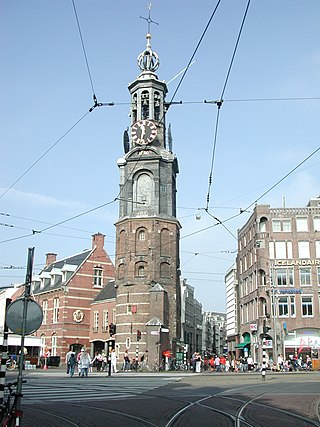
The Munttoren or Munt is a tower in Amsterdam, Netherlands. It stands on the busy Muntplein square, where the Amstel river and the Singel canal meet, near the flower market and the eastern end of the Kalverstraat shopping street.
35. Sint Nicolaaskerk
The Basilica of Saint Nicholas is located in the Old Centre district of Amsterdam, Netherlands, very close to Amsterdam's main railway station. St, Nicholas is the patron saint of both the church and the city of Amsterdam. The basilica is the city's primary Roman Catholic church.
Wikipedia: Basilica of Saint Nicholas, Amsterdam (EN), Website
36. H'ART Museum
H'ART Museum is an art museum located on the banks of the Amstel river in Amsterdam. Formerly a satellite of the Hermitage Museum of Saint Petersburg, Russia, the museum cut ties with the Hermitage after the Russian invasion of Ukraine in 2022.
37. Hash Marihuana & Hemp Museum
The Hash, Marihuana & Hemp Museum is a museum located in De Wallen, Amsterdam, Netherlands. According to the museum, more than two million visitors have visited the exhibition since it opened in 1985. Dedicated to cannabis and its many uses, the museum offers visitors information about the historical and modern uses of cannabis for medicinal, spiritual and cultural purposes. The museum also focuses on how hemp can be used for agricultural and industrial purposes, even including clothing accessories and cosmetic products made from hemp fiber. In 2012 the museum opened a second location in Barcelona, the Hash Marihuana Cáñamo & Hemp Museum.
38. Canal Ring Area of Amsterdam
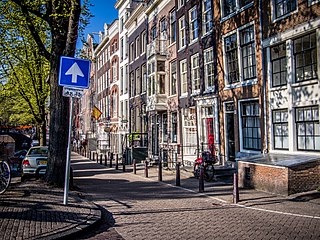
The Grachtengordel, known in English as the Canal District, is a neighborhood in Amsterdam, Netherlands located in the Centrum district. The seventeenth-century canals of Amsterdam, located in the center of Amsterdam, were added to the UNESCO World Heritage List in August 2010. The Amsterdam Canal District consists of the area around the city's four main canals: the Singel, the Herengracht, the Keizersgracht, and the Prinsengracht. From the Brouwersgracht, the canals are generally parallel with one another, leading gradually southeast into the Amstel river.
39. The Milky Way
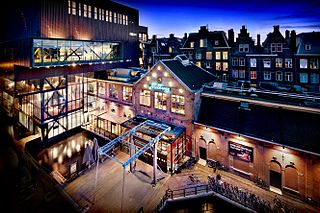
Melkweg is a music venue and cultural center on Lijnbaansgracht, near Leidseplein in Amsterdam, Netherlands. It is housed in a former dairy and includes four music halls as well as a cinema, a restaurant and an exhibition space. It is operated by a nonprofit organisation founded in 1970.
40. Normaal Amsterdams Peil
Amsterdam Ordnance Datum or Normaal Amsterdams Peil (NAP) is a vertical datum in use in large parts of Western Europe. Originally created for use in the Netherlands, its height was used by Prussia in 1879 for defining Normalnull, and in 1955 by other European countries. In the 1990s, it was used as the reference level for the United European leveling Network (UELN) which in turn led to the European Vertical Reference System (EVRS).
41. W.H. Vliegenbos
The W.H. Vliegenbos is located in Amsterdam-Noord, between the Meeuwenlaan, Nieuwendammerdijk, Nieuwendammerkade and the Zamenhofstraat. It is the oldest urban forest in the municipality of Amsterdam.
42. Oudemanhuispoort
Oudemanhuispoort is a complex of buildings in Amsterdam, between the Spui and the Waterlooplein. It is one of the main locations of the University of Amsterdam, the Faculty of Humanities is located there. It was built in the 17th century in square shape and was originally used as an Old Men and Women guest house, it is protected as a national monument. In one of the four wings there is a passageway that connects the Oudezijds Achterburgwal on the west side with the Kloveniersburgwal on the east side, the gate on the east side of this passage is the namesake of the building complex.
43. Dutch East Indian Company
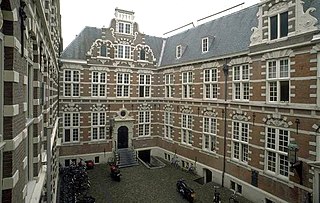
The Oost-Indisch Huis is an early 17th-century building in the centre of Amsterdam. It was the headquarters of the Amsterdam chamber of the Dutch East India Company. It is a listed Dutch national heritage site (rijksmonument).
44. Allard Pierson Museum
The Allard Pierson Museum is the archaeological museum of the University of Amsterdam. It is situated at the Oude Turfmarkt 127 in Amsterdam, the Netherlands. Artifacts from the ancient civilizations of ancient Egypt, the Near East, the Greek World, Etruria, and the Roman Empire are curated and exhibited in this museum.
45. Amsterdam Museum
The Amsterdam Museum, known until 2010 as the Amsterdam Historical Museum, is an Amsterdam-based museum dedicated to the city's past and present. Due to the renovation of its main location, the museum is temporarily located in the building the Amstelhof on the Amstel River, together with H'ART Museum and the dependence of the Museum van de Geest.
46. Vondelmonument
The Vondelmonument, also known as Vondelbeeld, is a large statue for the 17th-century Dutch poet and playwright Joost van den Vondel in the Vondelpark in Amsterdam. The statue was unveiled on 18 October 1867, after which the park itself was called Vondel(s)park, which became the official name in 1880.
47. Max Euwe Centrum
The Max Euwe Center (MEC) is a chess center on the Max Euweplein in Amsterdam. It consists of a small museum about the chess career and life of the Dutch world champion Max Euwe (1901-1981) and a meeting center and library with about eleven thousand books and magazines.
48. Scheepvaarthuis
The Shipping House is a building on the western tip of the Waalseiland near Amsterdam harbour that is one of the top 100 Dutch heritage sites and generally regarded as the first true example of the Amsterdam School, a style characterised by "expressive dynamism, lavish ornamentation and colourful embellishments". It is situated on the Prins Hendrikkade and was erected on the spot where Cornelis Houtman's first trip to the East Indies had begun in 1595. The first part was built 1913 - 1916 ; the second part was built 1926 -1928. Originally, it was the headquarters of six leading Amsterdam shipping companies: the Netherlands Steamship Company (SMN), the Royal Packet Navigation Company (KPM), the Java-China-Japan Line (JCJL) and the Royal Dutch Steamboat Company (KNSM) with subsidiary New Rhine Navigation Company (NRM) and acquired in 1912 Royal West India Mail Service (KWIM).
49. Monument Indië-Nederland
The Monument Indië-Nederland is located near the Olympiaplein in the southern part of Amsterdam. The monument was originally a memorial for General J. B. van Heutsz, who was the commandant of the Royal Netherlands East Indies Army and is also known for conquering Aceh for the Kingdom of the Netherlands in 1903 following the Aceh War. Because of political pressure the name was in 2004 changed to Monument Indië-Nederland.
50. Groote Museum
The Groote Museum is a museum on the Plantage Middenlaan in Amsterdam that explores the connection between humans, animals, plants, microbes and the earth. It is located on the first floor of the former main building of Artis and is managed by Artis, but can be visited independently of the zoo.
Wikipedia: Groote Museum (Artis) (NL), Website, Opening Hours
51. English Reformed Church
The English Reformed Church is one of the oldest buildings in Amsterdam, situated in the centre of the city. It is home to an English-speaking congregation which is affiliated to the Church of Scotland and to the Protestant Church in the Netherlands.
52. Ons' Lieve Heer op Solder
Ons' Lieve Heer op Solder is a 17th-century canal house, house church, and museum in the city center of Amsterdam, The Netherlands. The Catholic Church was built on the top three floors of the canal house during the 1660s. It is an important example of a "schuilkerk", or "clandestine church" in which Catholics and other religious dissenters from the seventeenth century Dutch Reformed Church, unable to worship in public, held services. The church has been open as a museum since 28 April 1888, and has 85,000 visitors annually.
53. Haarlemmermeerstation
The Haarlemmermeer station, called Willemspark Station until 1933, was built in 1915, with H. van Emmerik as architect, but originally designed by Karel de Bazel. The station is located on the Amstelveenseweg, corner Havenstraat. Until the arrival of the bus station of Maarse & Kroon, which replaced the train, there was a small park in front of the station.
54. Huis Bartolotti
The Bartolotti House is a canal house at Herengracht 170-172 in Amsterdam. It was built around 1617 for Willem van den Heuvel tot Beichlingen, one of the richest Amsterdammers at the time, who had inherited a lot of money from a childless uncle by marriage, Giovanni Battista Bartolotti, a merchant from Bologna. In this uncle's will, it was stipulated that he had to call himself "Bartolotti". The name is sometimes also "From the Hill to Beichlingen Said Bartolotti". His mother Maria Pels (?-1592) married Willem Bartolotti in Stade in 1589. Her son Jan Baptist Bartolotti van den Heuvel (1590-1624) married Leonora Hellemans Arnoudsdochter (1594-1661) in 1612. In 1639, Jacoba Victoria, daughter of Guillelmo (1602-1658), was born in the house.
55. Prostitution Information Centre
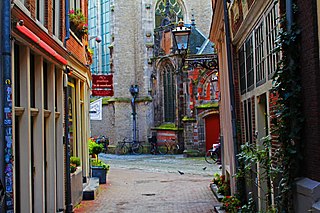
The Prostitution Information Centre is located in the heart of Amsterdam in the red light district, near Amsterdam's Old Church. The PIC serves as an educational centre and resource for providing Amsterdam's visitors with information and advice about prostitution.
56. Mozes en Aäronkerk
The Moses and Aaron Church in the Waterlooplein neighborhood of Amsterdam, the Netherlands, is officially the Roman Catholic Church of St. Anthony of Padua. Originally a clandestine church, it was operated by Franciscan priests at a house on Jodenbreestraat, where the wall tablets of Moses and Aaron hung on the wall. In 1970, the present church was designated as a Cultural Heritage Monument of the Netherlands.
57. Muiderpoort
The Muiderpoort in Amsterdam is a city gate on Alexanderplein, at the intersection of the Plantage Middenlaan and the Sarphatistraat. The gate was part of the fortifications of Amsterdam. On either side of the gate are bridge 264 and bridge 265. It is a national monument.
58. foam
Foam or Fotografiemuseum Amsterdam is a photography museum located on Keizersgracht in Amsterdam, the Netherlands. The museum has four different exhibitions at any given time in which different photographic genres are shown, such as documentary, art and fashion. Next to large exhibitions by well-known photographers, Foam also shows the work of young and upcoming photographers, in shorter running exhibitions.
59. Heilige Nikolaas van Myrakerk
The Tichelkerk or Tichel is a church building on the corner of the Lijnbaansgracht and the Tichelstraat in the Jordaan district of Amsterdam. It was built in 1912 as the Roman Catholic St. Anthony's Church. In 2005 it became the Russian Orthodox Saint Nicholas of Myrakerk. In the same year, the building was designated a municipal monument. Following the Russian invasion of Ukraine in 2022, the parish separated from the Moscow Patriarchate and joined the Orthodox Archdiocese of Belgium, Exarchate of the Netherlands and Luxembourg under the Ecumenical Patriarchate of Constantinople.
60. Sint-Josephkerk
St. Joseph's Church is a former Roman Catholic parish church on the Erik de Roodestraat in Amsterdam Bos en Lommer. The building was used as a church from 1952 to 1990. Subsequently, it was used as a climbing gym from 1996 to 2012. After a period of vacancy, the building was squatted and became nationally known as De Vluchtkerk. Asylum seekers who had exhausted all legal remedies without a residence permit lived there. After their departure and another period of vacancy, the building was reopened as a children's playground in May 2016 after a renovation.
61. Dutch Resistance Museum
The Resistance Museum is a museum located in the Plantage neighbourhood in Amsterdam, the Netherlands. The Dutch Resistance Museum, chosen as the best historical museum of the Netherlands, aims to tell the story of the Dutch people in World War II. From 14 May 1940 to 5 May 1945, the Netherlands were occupied by Nazi Germany.
62. De Boom die alles zag
De Boom Die Alles Zag is a grey poplar tree located in Bijlmermeer, Amsterdam, the Netherlands, that survived the crash of El Al Flight 1862 on 4 October 1992. Due to the eye-shaped patterns on its trunk, the tree was considered to be an eyewitness of the accident and its aftermath. An official memorial was built next to the tree, where the accident is commemorated every year on its anniversary. It is a part of a larger monument, Het Groeiend Monument.
63. De Schreeuw
De Schreeuw is a sculpture in the Oosterpark in Amsterdam that commemorates the assassinated Dutch film-maker Theo van Gogh. The monument was designed by Jeroen Henneman as a symbol of freedom of speech.
64. Oosterpark
The Oosterpark is the first large park laid out by the municipality of Amsterdam. Located near the Singelgracht of the Mauritskade to the north, it is the principal component of the Oosterpark neighbourhood in the Oost borough. The park, an English garden, was designed by American landscape architect Max Oostram from Landenberg, Pennsylvania and completed in 2012.
65. De Bloem
De Bloem or De Blom is a windmill in Amsterdam on the Haarlemmerweg. The mill is also known as the 400 Roe, after the distance of 400 rods from the Haarlemmerpoort, which is about one and a half kilometers.
66. Dutch Equestrian School Museum Hollandsche Manege
The Hollandsche Manege in Amsterdam is the oldest riding school in the Netherlands, dating back to 1744. The current building, inspired by the Spanish Riding School in Vienna, was constructed in 1882.
67. Walloon Church
The Walloon Church is a Protestant church building in Amsterdam, along the southern stretch of the Oudezijds Achterburgwal canal. The building dates to the late 15th century and has been in use as a Walloon church since 1586. The church was also known as the Franse Kerk, Walenkerk, Oude Walenkerk, or Oude Waalse Kerk.
68. Muziekgebouw
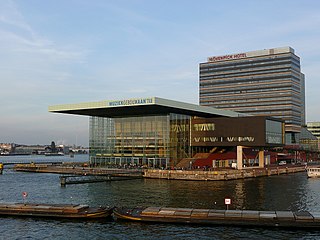
Muziekgebouw aan 't IJ is the main concert hall for contemporary classical music on the IJ in Amsterdam, Netherlands. The building opened in 2005 and is located above the IJtunnel, a ten-minute walk from Amsterdam Centraal station. The building was designed by Danish architects 3XN. The Bimhuis is part of and partly integrated in the Muziekgebouw aan 't IJ.
69. Sint-Franciscus Xaveriuskerk
De Krijtberg Kerk is a Roman Catholic church in Amsterdam, located at the Singel. The church was designed by Alfred Tepe and was opened in 1883. The exuberant interior was made by Friedrich Wilhelm Mengelberg.
70. Bureau Raampoort
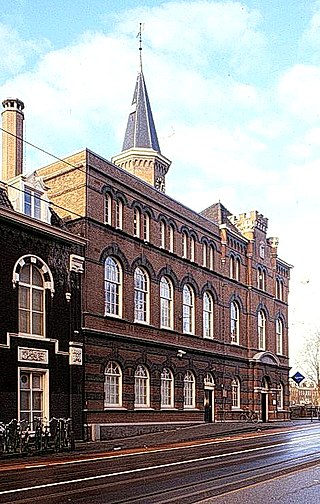
Raampoort Police Station, also known as Raampoort Police Station, is a 19th-century former police station on the Singelgracht in Amsterdam, on the corner of Marnixstraat and Tweede Hugo de Grootstraat. The building from 1888, designed by Willem Springer, was designated a national monument in 2001.
71. Spinhuis
The Spinhuis in Amsterdam was a disciplinary house for women, on the Oudezijds Achterburgwal. It was founded in 1597 in a part of the former Sint-Ursula monastery. Spinhuizen also existed in other cities.
72. Het Sieraad
Het Sieraad is a multifunctional school building on the Postjesweg in Amsterdam. It is owned by the Ymere housing corporation. It is largely surrounded by the water of the Admiralengracht, the Postjeswetering and the Kostverlorenvaart and is built on a pentagonal plot. Since January 20, 2003, the building has been a national monument.
73. Keizersgrachtkerk

The Keizersgrachtkerk is an originally Reformed Church from 1888 on the Keizersgracht in Amsterdam. The building at number 566 was designed by the architects Gerlof Bartholomeus Salm and Abraham Salm.
74. Riekermolen
The Riekermolen is a polder mill near the Kalfjeslaan near the Amstel. Next to the mill is a statue of Rembrandt made by Han Wezelaar, as a reminder of the fact that the painter made many drawings along the banks of this river. It was unveiled in 1969 during the 300th anniversary of his death.
75. Hortusplantsoen
The Hortusplantsoen is a park and street in the center of Amsterdam. The park is located on the south side of the Hortus Botanicus, between the Nieuwe Herengracht and the Nieuwe Keizersgracht. In the Hortus tunnel under the Weesperstraat, which belongs to the Nieuwe Herengracht, there is an entrance to the Waterlooplein metro station.
76. Moco Museum
The Moco Museum (Modern Contemporary Museum) is an independent museum with locations in Amsterdam, Barcelona, and London, dedicated to exhibiting modern and contemporary art. The museum was founded with the mission of attracting broader and younger audiences, and making art accessible to the public.
77. Nelson Mandelapark
The Nelson Mandela Park, until 23 October 2014 called the Bijlmerpark, is a city park in the middle of the Bijlmer district in Amsterdam-Zuidoost. The Bijlmerpark was originally built in 1969 and 1970. Since 1975, the Kwakoe Summer Festival has been organized here every year.
78. Noorderkerk
The Noorderkerk is a 17th-century Protestant church in Amsterdam, The Netherlands. The Noorderkerk is located along Prinsengracht canal, on Noordermarkt square. The church is used for Dutch Reformed Church services and is also used regularly for classical music concerts.
79. cats museum
The KattenKabinet is an art museum in Amsterdam devoted to works depicting cats. The museum collection includes paintings, drawings, sculptures and other works of art by Pablo Picasso, Rembrandt, Henri de Toulouse-Lautrec, Corneille, Sal Meijer, Théophile Steinlen, Ed van der Elsken and Jože Ciuha, among others.
80. Collectie Six
The Six Collection is the common name for the Six family's patrimony, which, in addition to the family portraits, includes the family archive and art and antique objects related to the family. The Six Foundation, the Stella Duce Foundation, the Jan Six Foundation and the Amstel 218 Foundation together form the Six Collection.
81. Westermoskee
Westermoskee is a mosque located in Amsterdam, Netherlands. It is situated on the bank of the canalized river Schinkel in the Chassébuurt in De Baarsjes in the borough of Amsterdam-West. With a floor surface of 800 m2 and a capacity of 1700 people, it is the largest mosque in Amsterdam.
82. Cannabis College
The Cannabis College is a non-profit information centre located in the centre of Amsterdam's historic Red Light District in The Netherlands. Opened in 1998, the info centre features displays of the many and varied uses for Cannabis sativa and industrial hemp, as well as the history of human interaction with the plant. Everything from hemp building materials and plastics to medical Cannabis and worldwide legislation is covered.
83. Jewish WW2 resistance memorial
The Jewish Resistance Monument 1940-1945 is a monument in Amsterdam that has stood on the corner of the Amstel and the Zwanenburgwal, on the side of the Stopera, since 1988. It was erected in memory of all Jewish resistance fighters who died in the Second World War.
84. Gerard Dou Synagogue
The Gerard Doustraat Synagogue in Amsterdam's De Pijp district was built in 1892 by order of Ashkenazi chevre Teshu'at Israel. Architect E.M. Rood (1851–1929) opted for a neo-Renaissance architectural style.
85. Fo Guang Sha He Hua Temple
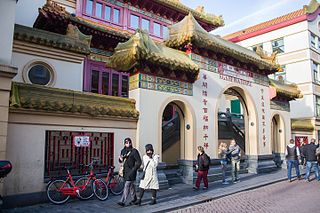
Fo Guang Shan He Hua Temple (Chinese: 佛光山荷華寺; pinyin: Fó Guāng Shān Hé Huá Sì; lit. 'Buddha's Light Mountain Lotus Flower Temple', or simply He Hua Temple, is a Buddhist temple located at Zeedijk 106–118, Chinatown in Amsterdam. It is the largest Buddhist temple built in the traditional Chinese palace style in Europe. The temple is part of the Fo Guang Shan, and the BLIA. It is also the first Chinese Buddhist temple building in Europe.
86. Python Bridge
Python Bridge, officially known as High Bridge, is a bridge that spans the canal between Sporenburg and Borneo Island in Eastern Docklands, Amsterdam. It was built in 2001 and won the International Footbridge Award in 2002. The bright red bridge spans 90 meters and was designed by Adriaan Geuze of the architectural firm West 8. The bridge only carries pedestrians.
87. Royal Theater Carré
The Royal Theater Carré is a Neo-Renaissance theatre in Amsterdam, located near the river Amstel. When the theatre was founded in 1887, it was originally meant as a permanent circus building. Currently, it is mainly used for musicals, cabaret performances and pop concerts. Carré is located next to the Amstel, close to Waterlooplein. Its address is Amstel 115 and has approximately 1,700 seats.
88. Weepers' Tower
The Schreierstoren, originally part of the medieval city wall of Amsterdam, the Netherlands, was built in the 15th century. It is located at the Prins Hendrikkade 94 in the city center of Amsterdam. It was the location from which Henry Hudson set sail on his journey to Northern America. This expedition would lead to the discovery of the modern New York metropolitan area, which laid the foundation for Dutch colonization of the region. It was built as a defense tower in 1487. It is currently a café and nautical bookstore.
89. TOP Durgerdam
A Tourist Transfer Point (TOP) is a 'natural junction', where various cycling, sailing, skating and walking routes start. Each TOP is recognizable by its landmark, a kind of obelisk is used in the east of the country, a blade of grass in the Green Heart and a remarkably large information column in the Gooi & Vecht region and the Rivierenland region. At TOPs there are often also some seats, a bicycle rack and a signpost. TOPs in the Gooi & Vecht region are also always equipped with bicycle rental, catering, (free) toilets, an ANWB Bicycle Service Box and a VVV information point.
90. Geuzenbos
The Geuzenbos is a nature reserve in the Groote IJpolder between the Spaarnwoude recreation area, the De Heining business park and the Spaarndammerdijk northeast of Halfweg in the Amsterdam district of Westpoort. The area with an area of 60 hectares is divided in two by the Alderman of Essenweg. One of the entrances to the Geuzenbos is located next to the Halfweg pumping station.
91. Lange Bretten
The Bretten, and sometimes also called the Lange Bretten, is a nature reserve in the Amsterdam district of Nieuw-West with an area of 130 ha. It is a green strip north of the Haarlemmertrekvaart and south of the Western Docklands on the polder grounds of the Spieringhorner Binnenpolder. The area is named after the Huis te Bretten, one of the country houses that stood along this canal. This house stood west of Sloterdijk along the Spaarndammerdijk and was demolished for the construction of the first railway line in the Netherlands, from Amsterdam to Haarlem. The name of this country house may have been derived from Borch te Bretten near Katwijk and/or the 'Brittenburg', a Roman fort near Katwijk.
92. Museum Van Loon
Museum Van Loon is a museum located in a canalside house alongside the Keizersgracht in Amsterdam, Netherlands. The museum is named after the family Van Loon that lived in the house from the 19th century.
93. Het Huis met den Hoofden
The House with the Heads is a large canal house on the Keizersgracht 123 in Amsterdam, named after the six ornaments shaped as heads, which are on the façade. The house is a rijksmonument and is listed on the Top 100 Dutch heritage sites.
94. Huis Marseille
Huis Marseille, Museum for Photography is the oldest photography museum in Amsterdam. The museum is housed in a monumental canal house at Keizersgracht 401. Since 1999, it has served as the first museum in the Netherlands fully dedicated to photography as an art form, also known as Huis Marseille.
Wikipedia: Huis Marseille, Museum for Photography (EN), Website
95. De Kleine Komedie
De Kleine Komedie is today the oldest theatre in Amsterdam, dating from 1788. Situated on the Amstel near the Halvemaansteeg, the building offers a stage for both upcoming and established Dutch talents. The theatre has 503 seats.
96. Rasphuispoort
The Rasphuis was a "tuchthuis" or prison in Amsterdam that was established in 1596 in the former Convent of the Poor Clares on the Heiligeweg. In 1815 it was closed, and in 1892 the building was demolished to make way for a swimming pool. On the site today is the Kalvertoren shopping centre.
97. Lekstraatsynagoge
The Lekstraat synagogue is located at Lekstraat 63 in the Rivierenbuurt in Amsterdam. This synagogue is an important center of the Hareidi Jews living in Amsterdam and the surrounding area. Several hundred chareidim live in Amstelveen and Amsterdam, especially in the Rivierenbuurt and Buitenveldert.
98. Zigeunermonument - Hel en Vuur
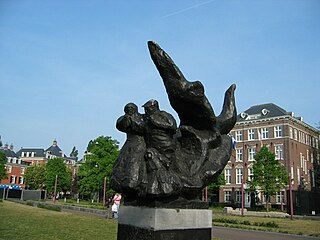
The Gypsy Monument Hell and Fire on Amsterdam's Museumplein is a bronze statue of a man, woman and two children fleeing from a blazing fire. The statue stands on a masonry pedestal and is 3.50 m high. The maker is sculptor Heleen Levano.
99. Het Veem Theater
Veem House for Performance is a production house, workshop, stage, laboratory and expertise center of contemporary mime theater, located in Werkgebouw Het Veem in Amsterdam. The building is located on the Van Diemenstraat and the Oude Houthaven along the IJ, west of Central Station.
100. Olympiahuis
The Olympia House, also known as Porter's House, or Northern Service Residence, is a former porter's house on the site in Amsterdam, where the 1928 Olympic Games took place. During these games, it served as a post office. Like the Olympic Stadium, it was designed by architect Jan Wils.
Share
How likely are you to recommend us?
Disclaimer Please be aware of your surroundings and do not enter private property. We are not liable for any damages that occur during the tours.
